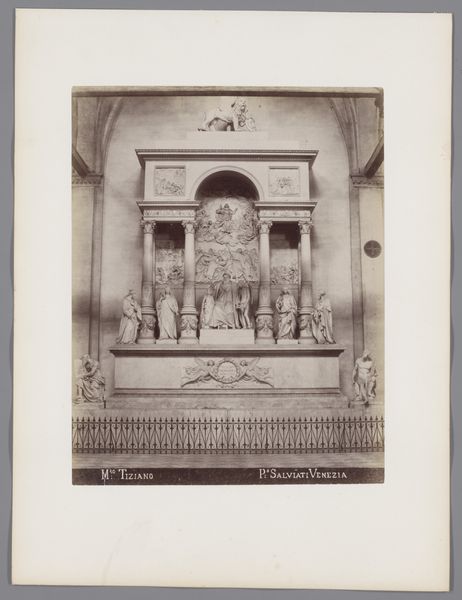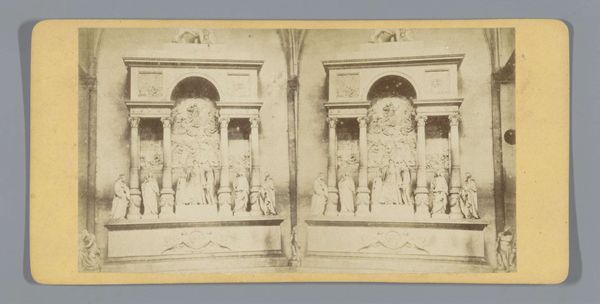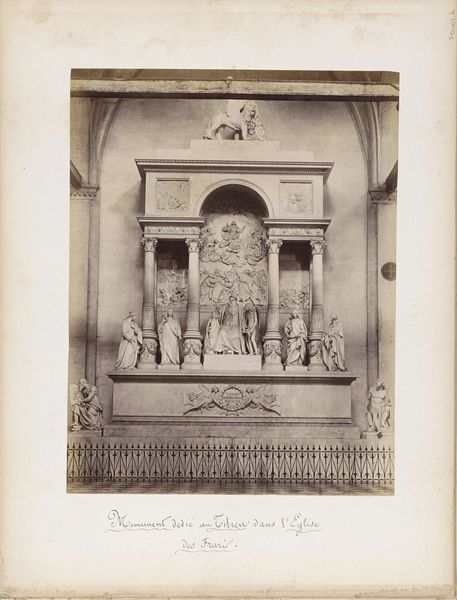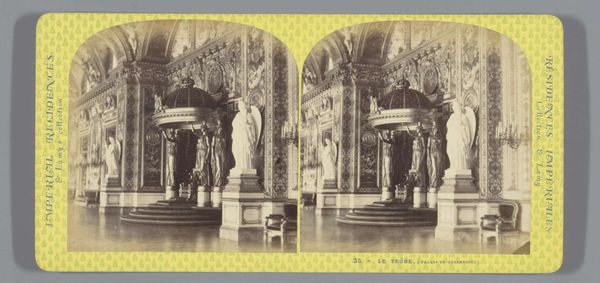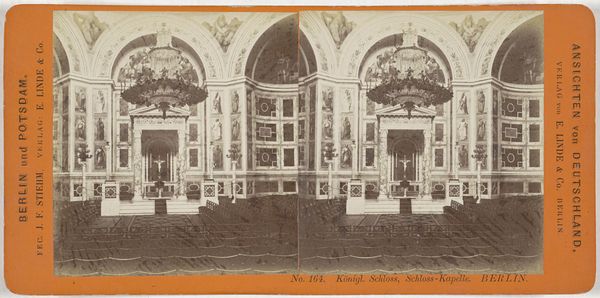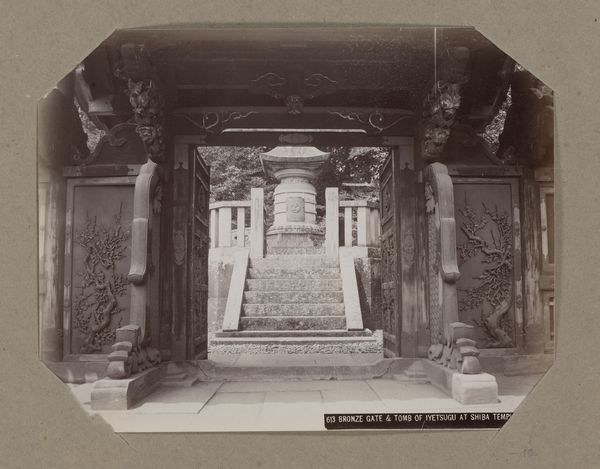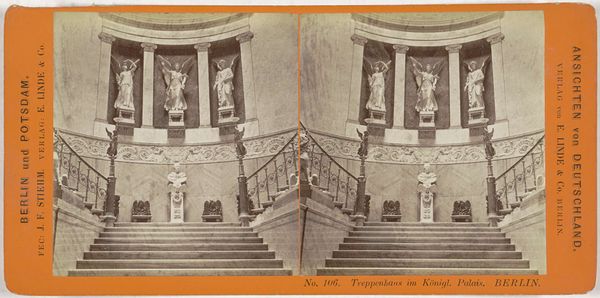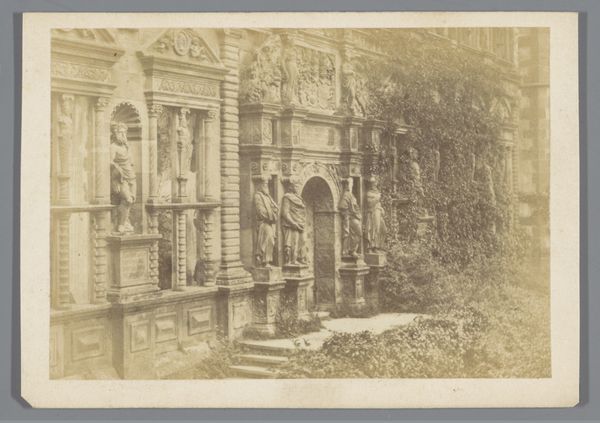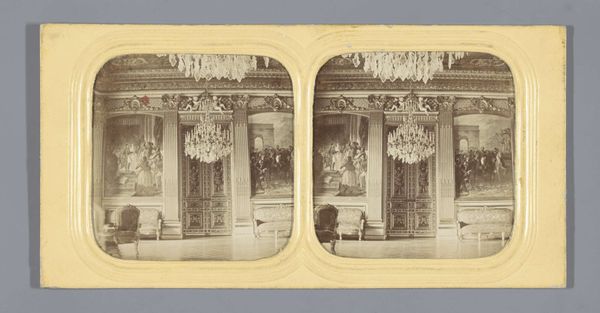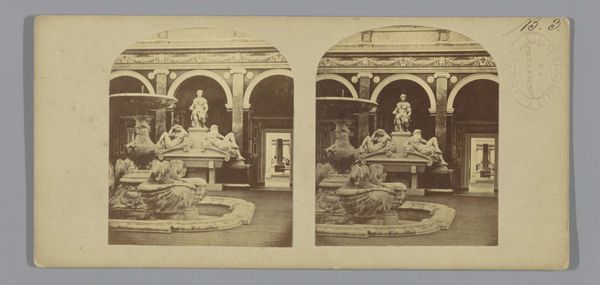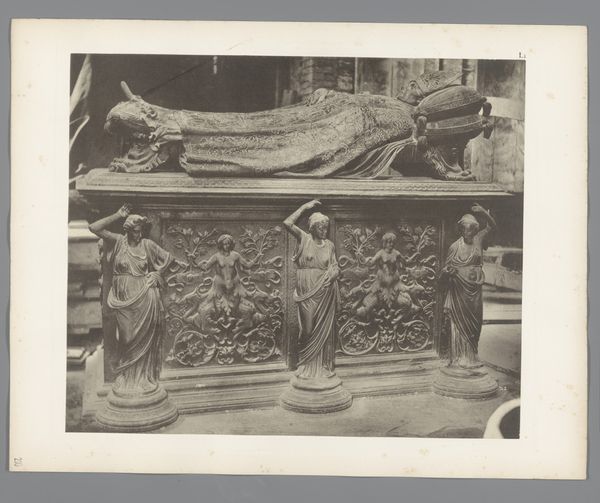
Staatsietrap naar de grote zaal in het Berliner Stadtschloss, Berlijn 1868 - 1870
0:00
0:00
print, photography, gelatin-silver-print
#
portrait
#
historical design
#
neoclassicism
# print
#
photography
#
gelatin-silver-print
#
cityscape
#
history-painting
Dimensions: height 86 mm, width 176 mm
Copyright: Rijks Museum: Open Domain
Editor: This photograph, "Staatsietrap naar de grote zaal in het Berliner Stadtschloss, Berlijn," taken between 1868 and 1870 by Johann Friedrich Stiehm, presents a grand staircase. The stark contrast in this gelatin-silver print gives it an almost ghostly quality. What aspects of the staircase and its environment stand out to you? Curator: I'm immediately drawn to the socio-economic implications of documenting this space. The photographic process itself, requiring specialized knowledge and equipment, speaks to the rise of industrial technologies and the new availability of representational media during this period. How does the photographic documentation of the Berlin Palace function within systems of power, manufacturing, and marketing, and ultimately, what value does this photo produce? Editor: So you're saying it's more than just a picture; it’s also about what its creation says about society at the time? Curator: Precisely. We see a conscious choice to represent opulence. The materials utilized in the staircase - the marble, bronze, the presumed labor behind carving and erecting such a grand space, these are testaments to royal wealth. Stiehm doesn’t simply present the staircase, but implicitly reinforces a hierarchical structure where some command the resources to create and occupy such spaces, and others can only record and consume them. Even the gelatin silver printing process—a specific type of industrial method— reinforces that notion. Editor: It's interesting to consider the political statement inherent in what appears to be a purely architectural photograph. I hadn't thought about photography itself as a tool with underlying political power. Curator: It underscores that no art exists outside a system of material production and economic relations. Focusing on the photographic print allows us to decipher these power structures that created and preserved them. Considering labor helps uncover the historical reality of how cultural productions occur, especially in contexts like royal houses. Editor: Thanks. I learned to see how material conditions influence representation in photography. Curator: And how consumption reflects socio-economic positions. A good reminder!
Comments
No comments
Be the first to comment and join the conversation on the ultimate creative platform.

